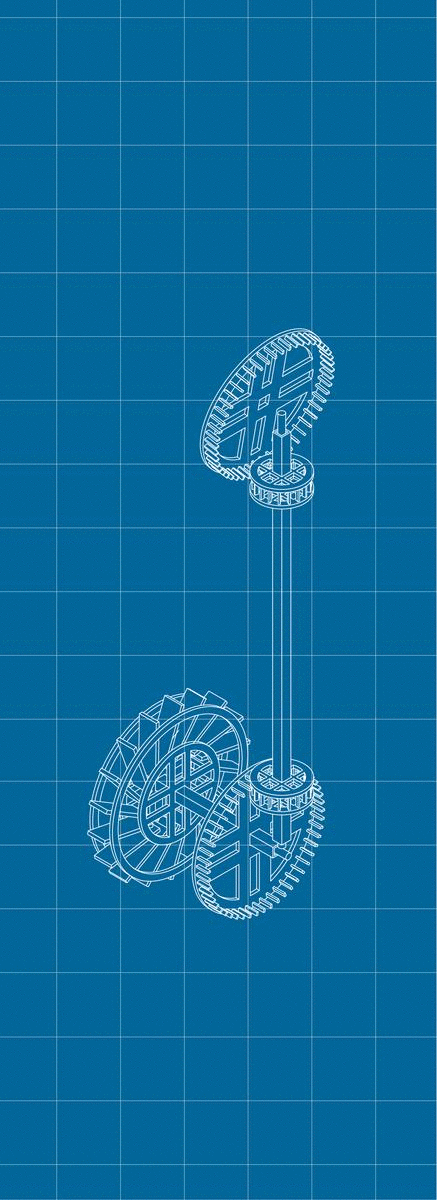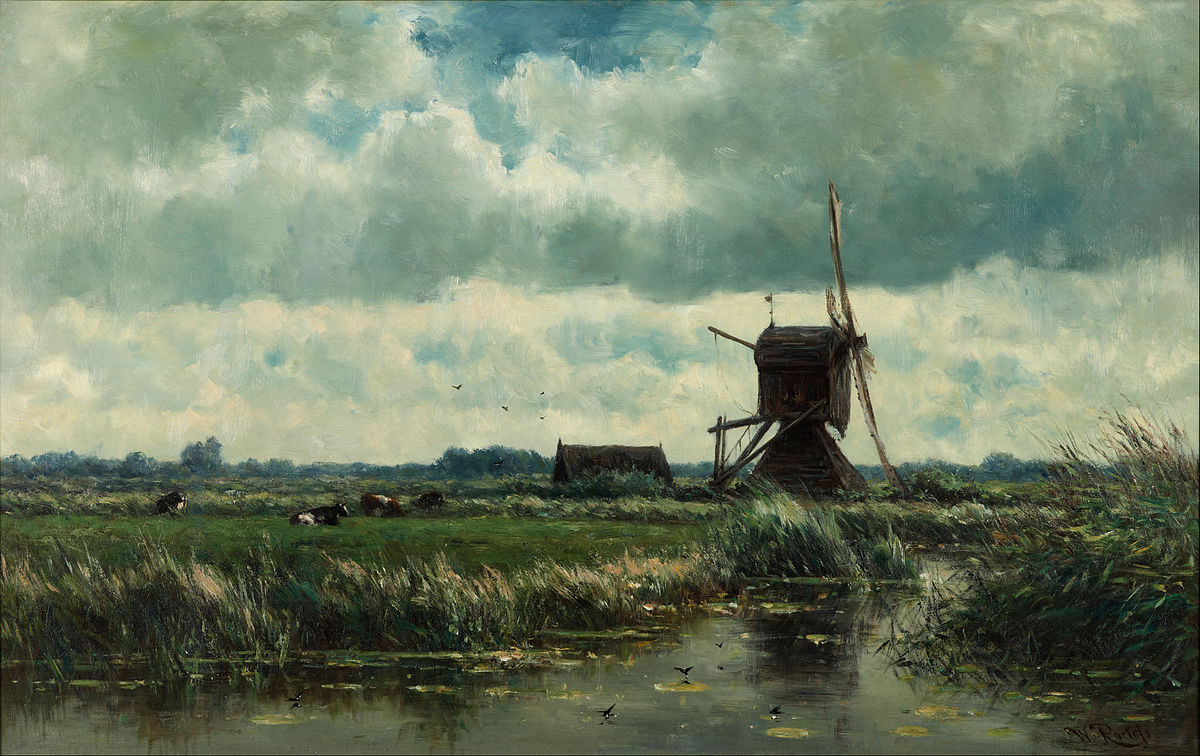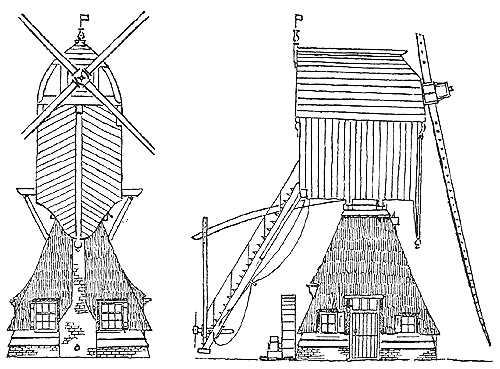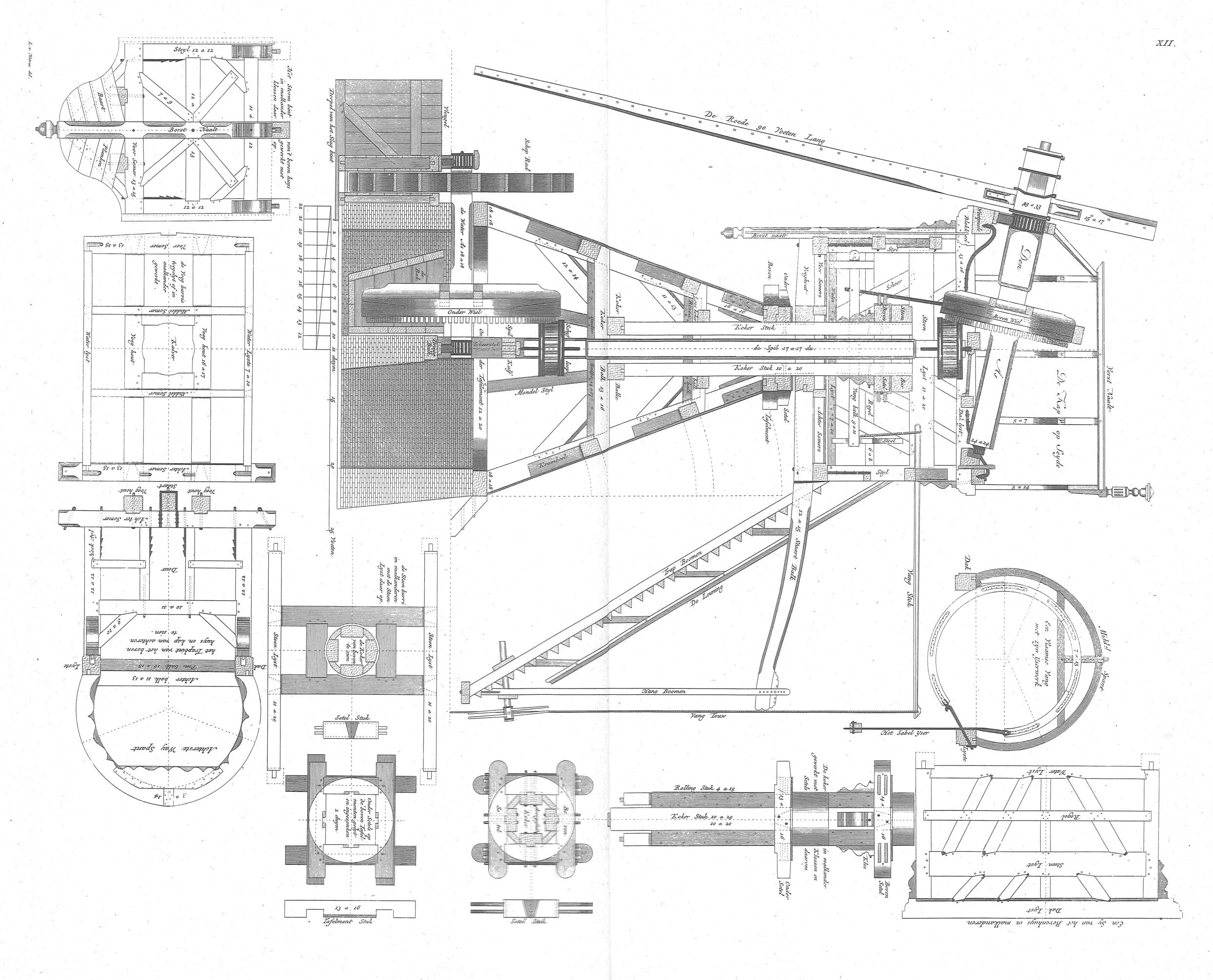Windmill Interpretive Model
The Role of Technological Revolutions in the Cultural Landscape
Instructor: Michael Lee
Individual Project
Year: 2019 Fall
Location: The Netherland
![]()
![]()
The Dutch landscape is a hybrid landscape – the entire country has been designed, modified, and adapted by the Dutch people throughout centuries. There are countless paintings which depict the landscape in the Netherland with cows, grass, barns, windmills, and linear polders. In this project, I studied how windmill became part of this hybrid Dutch landscape through building a scaled model of 1500s windmill.
![]()
![]()
Almost one third of the Netherland is under sea level, and flood is a constant risk because of the flow of the river Rhines and Meuse. Although the lower part of the Netherland might not be considered appropriate for habitation, there are some evidence showing trace of settlement since 700 BC (Borger 109). People were building low dike to fend off water. Later during the Middle Ages, more dikes were built because of a growing population. It was speculated that the reason why there were settlement in the lower part of the Netherland despite the difficulties in cultivation was because people would be able to avoid feudal duties and rules. As a result, the dikes built during the Middle Ages were constructed by the local people. Together, the local people voluntarily collaborated in choosing the location, the construction method, and the maintenance of the dikes (Borger 110).
Windmill came in use for the drainage of polders and dikes during the 1400 AD (Borger 111). The windmill sits on a dike between a lake/marsh and an artificial canal. The windmill lifts water from the lake/marsh into the canal, and slowly drain the lake/marsh and turn it into a dry field capable of cultivation. The earliest pumping mill were hollow post mill which were developed from grinding mills (Beedell 71). Hollow post mill consists two part from its exterior: a relatively small cube containing upper gears and windshafts, and a large pyramidal base containing bottom gears which connect with the fixed water wheel. These two parts are supported by an upright shaft and a hollow post which ensures the gear rotation. The larger size of the base is to accommodate the force brought down by the upper gears and shaft. The leftover space of the pyramidal base is usually the miller’s living quarter (Stokhuyzen 29).
The maintenance of the windmill as well as the corresponding drainage systems are managed by reginal water board. All landowners and land users were part of the governance of water at the local level – each of the landowners was responsible for his part of the polder according to the area of land he owned (Xu and Blusse 434).
![]()
Individual Project
Year: 2019 Fall
Location: The Netherland


The Dutch landscape is a hybrid landscape – the entire country has been designed, modified, and adapted by the Dutch people throughout centuries. There are countless paintings which depict the landscape in the Netherland with cows, grass, barns, windmills, and linear polders. In this project, I studied how windmill became part of this hybrid Dutch landscape through building a scaled model of 1500s windmill.


Almost one third of the Netherland is under sea level, and flood is a constant risk because of the flow of the river Rhines and Meuse. Although the lower part of the Netherland might not be considered appropriate for habitation, there are some evidence showing trace of settlement since 700 BC (Borger 109). People were building low dike to fend off water. Later during the Middle Ages, more dikes were built because of a growing population. It was speculated that the reason why there were settlement in the lower part of the Netherland despite the difficulties in cultivation was because people would be able to avoid feudal duties and rules. As a result, the dikes built during the Middle Ages were constructed by the local people. Together, the local people voluntarily collaborated in choosing the location, the construction method, and the maintenance of the dikes (Borger 110).
Windmill came in use for the drainage of polders and dikes during the 1400 AD (Borger 111). The windmill sits on a dike between a lake/marsh and an artificial canal. The windmill lifts water from the lake/marsh into the canal, and slowly drain the lake/marsh and turn it into a dry field capable of cultivation. The earliest pumping mill were hollow post mill which were developed from grinding mills (Beedell 71). Hollow post mill consists two part from its exterior: a relatively small cube containing upper gears and windshafts, and a large pyramidal base containing bottom gears which connect with the fixed water wheel. These two parts are supported by an upright shaft and a hollow post which ensures the gear rotation. The larger size of the base is to accommodate the force brought down by the upper gears and shaft. The leftover space of the pyramidal base is usually the miller’s living quarter (Stokhuyzen 29).
The maintenance of the windmill as well as the corresponding drainage systems are managed by reginal water board. All landowners and land users were part of the governance of water at the local level – each of the landowners was responsible for his part of the polder according to the area of land he owned (Xu and Blusse 434).

About the Model
The model I built is mainly based on drawings of a Wipmolen (Hollow Post Mill) which was illustrated in Groot Volkomen Moolenboek as well as some illustration in Stokhuyzen’s Dutch Windmill. I referenced its overall proportion, the gear size, and the wheel size. However, it is difficult for me to say that the model belongs to a specific time period, because there are many aspects which could affect the design of a windmill. For example, the gears need to work properly, the water wheel needs to be an appropriate size with right number of blades, the sail need to be both light enough to rotate and sturdy enough not to break under strong wind, and the mill itself need to be a sound structure to stand in the marshy land. There is a great degree of changes and variation of this type of windmill. Before building the model, it was easy to imagine windmill as a tool which I could find the illustration and build accordingly. However, I realized that there are in fact many variations of the hollow post mill throughout time, and the evolutions and variations are not linear - the gear might tilt at another angle, the sail design might be different, or the water wheel might be a different kind.
The model I built is mainly based on drawings of a Wipmolen (Hollow Post Mill) which was illustrated in Groot Volkomen Moolenboek as well as some illustration in Stokhuyzen’s Dutch Windmill. I referenced its overall proportion, the gear size, and the wheel size. However, it is difficult for me to say that the model belongs to a specific time period, because there are many aspects which could affect the design of a windmill. For example, the gears need to work properly, the water wheel needs to be an appropriate size with right number of blades, the sail need to be both light enough to rotate and sturdy enough not to break under strong wind, and the mill itself need to be a sound structure to stand in the marshy land. There is a great degree of changes and variation of this type of windmill. Before building the model, it was easy to imagine windmill as a tool which I could find the illustration and build accordingly. However, I realized that there are in fact many variations of the hollow post mill throughout time, and the evolutions and variations are not linear - the gear might tilt at another angle, the sail design might be different, or the water wheel might be a different kind.




Model
Reference
Stokhuyzen, F. The Dutch Windmill.
Universe Books, 1963. (Left)
Natrus, Leendert Van; Polly, Jacob; Punt, Jan & Cornelis Van Vuuren. Groot Volkomen Moolenboek. Amsterdam, Johannes Covens En Cornelis Mortier, 1734. (Right)
Natrus, Leendert Van; Polly, Jacob; Punt, Jan & Cornelis Van Vuuren. Groot Volkomen Moolenboek. Amsterdam, Johannes Covens En Cornelis Mortier, 1734. (Right)
Work Cited
Beedell, Suzanne Mollie. Windmills. Scribner Library ed. Scribner, 1979.
Borger, Guus J., and Willem A. Ligtendag. "The Role of Water In the Development of the Netherlands: A Historical Perspective." Journal of Coastal Conservation, vol. 4, no. 2, 1998, p. 109.
Eldridge, Frank R. Wind Machines. National Science Foundation, Research Applications Directorate, Research Applied and Technology, 1975.
Stokhuyzen, F. The Dutch Windmill. Universe Books, 1963.
Xu, Guanmian, and Blussé, Leonard. “Land Reclamation in the Rhine and Yangzi Deltas: An Explorative Comparison, 1600–1800.” SpringerLink, Springer Berlin Heidelberg, 16 Apr. 2018, https://link.springer.com/article/10.1007/s40647-018-0223-1.
Beedell, Suzanne Mollie. Windmills. Scribner Library ed. Scribner, 1979.
Borger, Guus J., and Willem A. Ligtendag. "The Role of Water In the Development of the Netherlands: A Historical Perspective." Journal of Coastal Conservation, vol. 4, no. 2, 1998, p. 109.
Eldridge, Frank R. Wind Machines. National Science Foundation, Research Applications Directorate, Research Applied and Technology, 1975.
Stokhuyzen, F. The Dutch Windmill. Universe Books, 1963.
Xu, Guanmian, and Blussé, Leonard. “Land Reclamation in the Rhine and Yangzi Deltas: An Explorative Comparison, 1600–1800.” SpringerLink, Springer Berlin Heidelberg, 16 Apr. 2018, https://link.springer.com/article/10.1007/s40647-018-0223-1.